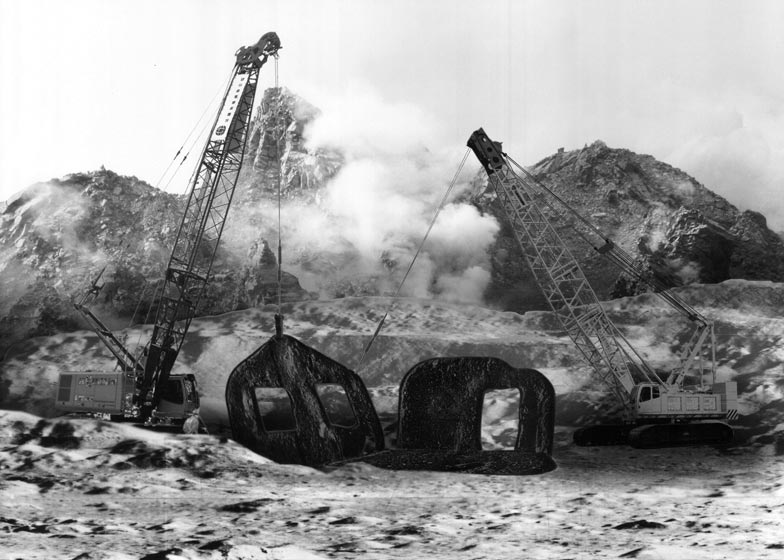Welsh designer Kieren Jones has devised a concept for harnessing the destructive power of erupting volcanoes by using lava flows to cast components for buildings.
Having discovered that the current method for controlling lava from the world's most volatile volcanoes is to redirect it using huge concrete barriers or cool it with sea water, Kieren Jones developed an alternative scenario in which the lava pours into casting beds excavated in the shape of structural building blocks.
"Not only would these casting beds protect the population at the base of the volcanoes but they will also provide them with a constructive material in which to aid the recovery of a community post eruption," Jones explained.
The designer believes that the accuracy with which volcanic activity can be predicted using sophisticated geological data could enable the casting beds to be positioned at the most effective points to capture the molten rock.
"Lava as a material is naturally light and thermally insulating and has the potential to be a strong building block," said Jones.
Models of 16 of the world's most active and researched volcanoes, known as the Decade Volcanoes, were presented alongside drawings and scale models at an exhibition called Blanks in Between, curated by Workshop for Potential Design during this year's London Design Festival.
Here's some more information from the designer:
The Volcano Project
By Kieren Jones
In 2013 there are 16 volcanoes that have been identified by the International Association of Volcanology and Chemistry of the Earth’s Interior of being of particular interest to study due to their history of destructive eruption and proximity to populated areas – these 16 volcanoes are known as the Decade Volcanoes.
Traditionally people have toyed with living at the base of volcanoes, as the ground is highly fertile fuelled by the ash and molten lava of past eruptions. Within the immense destruction of these often vast and bubbling mounds lies potential for a constructive future.
The United Nations are currently able to predict with relative accuracy when each Decade Volcano is likely to erupt and determine the direction in which the lava will flow. At present the method for mitigating the destruction of lava flows is to place large concrete blocks in the predicted path of the flowing lava and spraying it with sea water in order to try and cool this molten material.
Intrigued by the potential that these destructive happenings have and keen to find a way to harness this powerful flow into something constructive I have been investigating the potential of creating architectures from the flowing lava. Lava as a material is naturally light and thermally insulating and has the potential to be a strong building block. In fact the early Romans created some vast domed structures using this molten material.
Therefore instead of placing large concrete blocks in its path, I propose to create large casting beds into which the lava can flow, creating building blocks for future shelters. Not only would these casting beds protect the population at the base of the volcanoes but they will also provide them with a constructive material in which to aid the recovery of a community post eruption.
On the occasion of the Blanks in Between exhibition during the London Design Festival 2013, I presented a series of experiments and investigations into the potential that the Decade Volcanoes have to build future architectures providing constructive solutions out of natural destruction.

